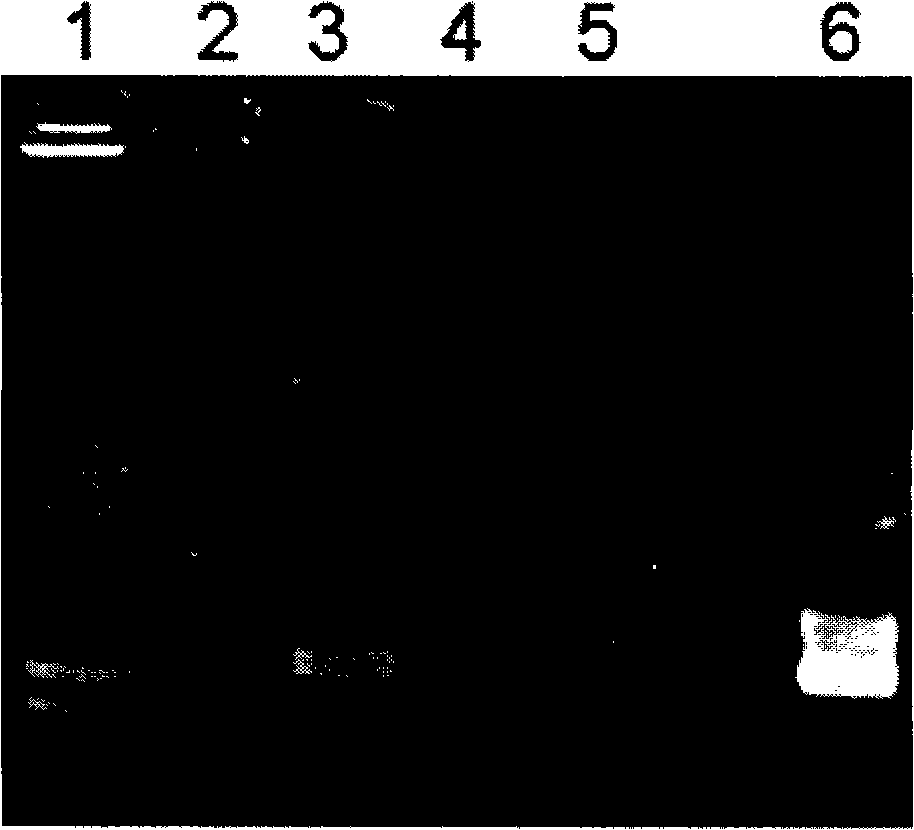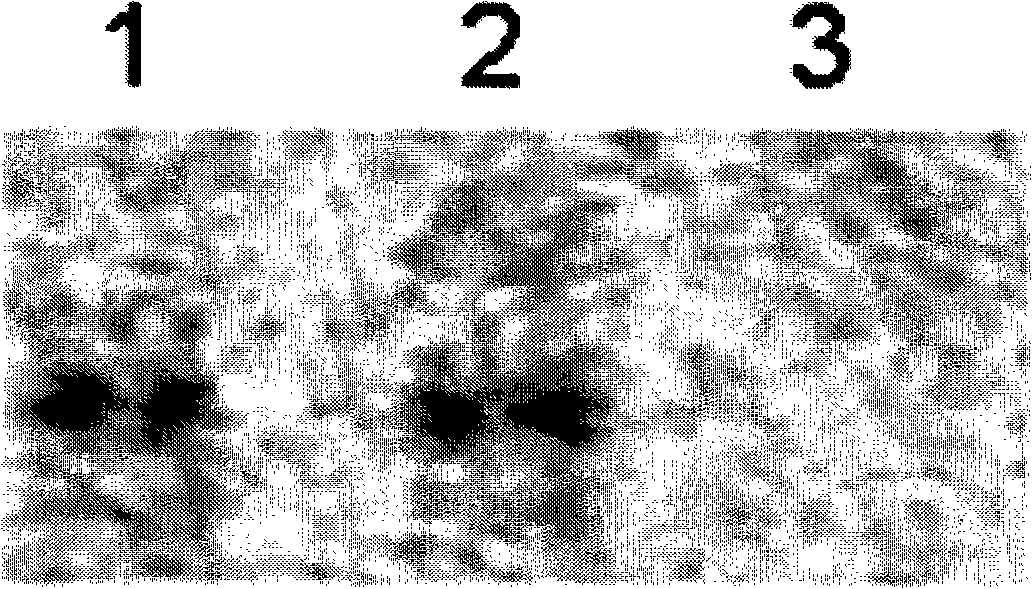Protease inhibitor of black nightshade and application thereof
A technology of protease inhibitors and genes, applied in the fields of application, genetic engineering, plant genetic improvement, etc., can solve the problems of insect death, insect inability to decompose protein, and affect insect growth and development, so as to improve insect resistance and plant insect resistance sexual effect
- Summary
- Abstract
- Description
- Claims
- Application Information
AI Technical Summary
Problems solved by technology
Method used
Image
Examples
Example Embodiment
[0033] Example 1 The acquisition of NPIB and the construction of its expression vector
[0034] 1. Acquisition of NPIB and construction of plant expression vector pAH2b
[0035] According to the partial sequence of SaPIN2b, the present invention obtains NPIB cDNA through RT-PCR with solanum nigrum mRNA, and then uses primers ZF259 and ZF260 to introduce Bam HI and Kpn I restriction sites. Then connect it with pGEM-T easy (PROMEGA), transform Escherichia coli DH5α, and screen the cloned transformants with blue and white spots. Extract the plasmid of the positive transformant, carry out enzyme digestion test with Kpn I and Bam HI endonuclease, and recover the restriction fragment. Digest the pHANNIBAL vector with KpnI and Bam HI (the pHANNIBAL vector has a CaMV 35S promoter and NOS terminator that provide gene expression, and has Amp resistance), and the pHANNIBAL fragment after digestion is gel-recovered, ligated with the NPIB cDNA fragment, and ligated The product was transf...
Example Embodiment
[0046] Tobacco Transformation and Kanamycin Resistance Screening of Example 2 Agrobacterium-Mediated
[0047] Inoculate the corresponding Agrobacterium strains from the plate in YEB liquid medium containing corresponding antibiotics (kanamycin 50mg / ml, rifampin 50mg / L), and culture at 180rpm at 28°C for two days; then dilute the Agrobacterium with liquid TRM medium liquid to OD 600 About 0.2 to 0.3. The sterile leaves were cut into leaf discs and placed in diluted Agrobacterium solution for 5 minutes. Get a small amount of cut leaves and put them into the liquid TRM medium without Agrobacterium, and move them to plates without or with Kan (50mg / L) respectively as positive and negative controls for transformation. Incubate in the dark at 28°C for two days, rinse the explants at least 5 times with liquid TRM medium, and blot the liquid on sterile filter paper. The explants were transferred to TRM solid plates containing corresponding antibiotics (100 μg / ml kanamycin, 250 μg / m...
Example Embodiment
[0048] Embodiment 3 Kanamycin-resistant transgenic plants are detected by PCR
[0049] Primers used in this example:
[0050] 5' primer sequence: ZF56 5'-TCCCACTATCCTTCGCAAGACCC-3';
[0051] 3' end primer sequence: ZF171 5'-CCGCTCGAGGCATTTCATTGATTAG-3';
[0052] The PCR reaction conditions were: 95°C, 5 minutes for 1 cycle, followed by 95°C for 50 seconds, 58°C for 40 seconds, 72°C for 40 seconds, 35 cycles, and then 72°C for 10 minutes. Select the material identified as positive by PCR, the result is as follows figure 2 As shown, the corresponding bands were amplified in the transgenic plants and the positive control.
PUM
 Login to view more
Login to view more Abstract
Description
Claims
Application Information
 Login to view more
Login to view more - R&D Engineer
- R&D Manager
- IP Professional
- Industry Leading Data Capabilities
- Powerful AI technology
- Patent DNA Extraction
Browse by: Latest US Patents, China's latest patents, Technical Efficacy Thesaurus, Application Domain, Technology Topic.
© 2024 PatSnap. All rights reserved.Legal|Privacy policy|Modern Slavery Act Transparency Statement|Sitemap



